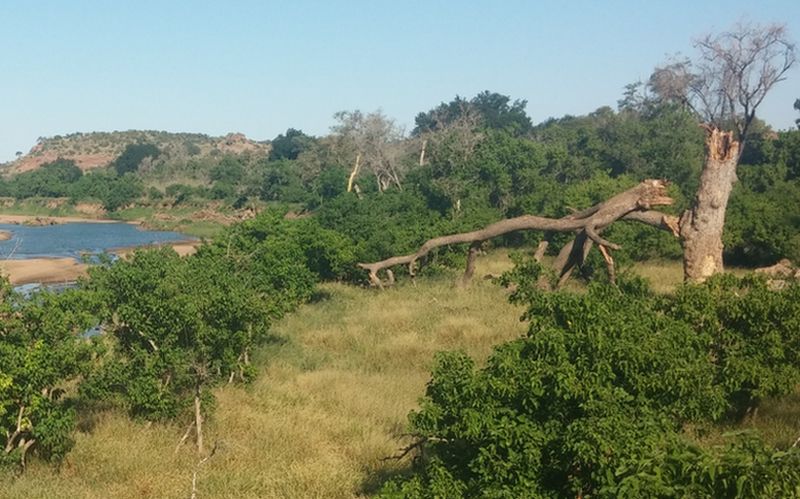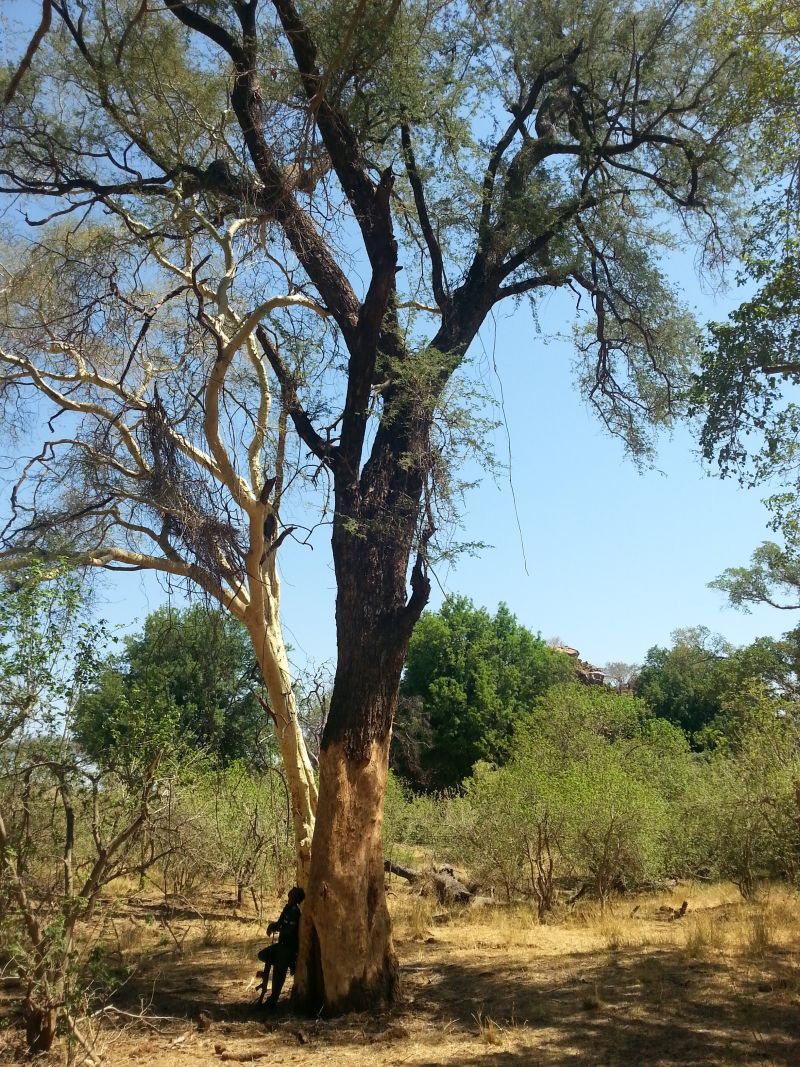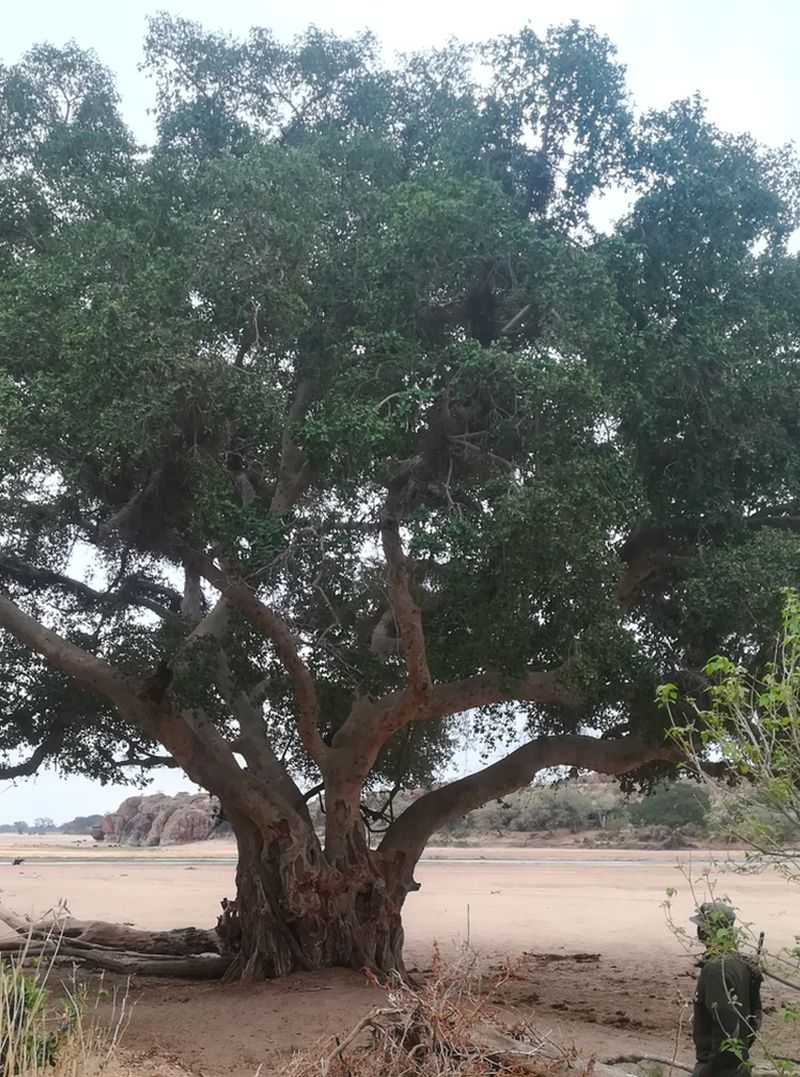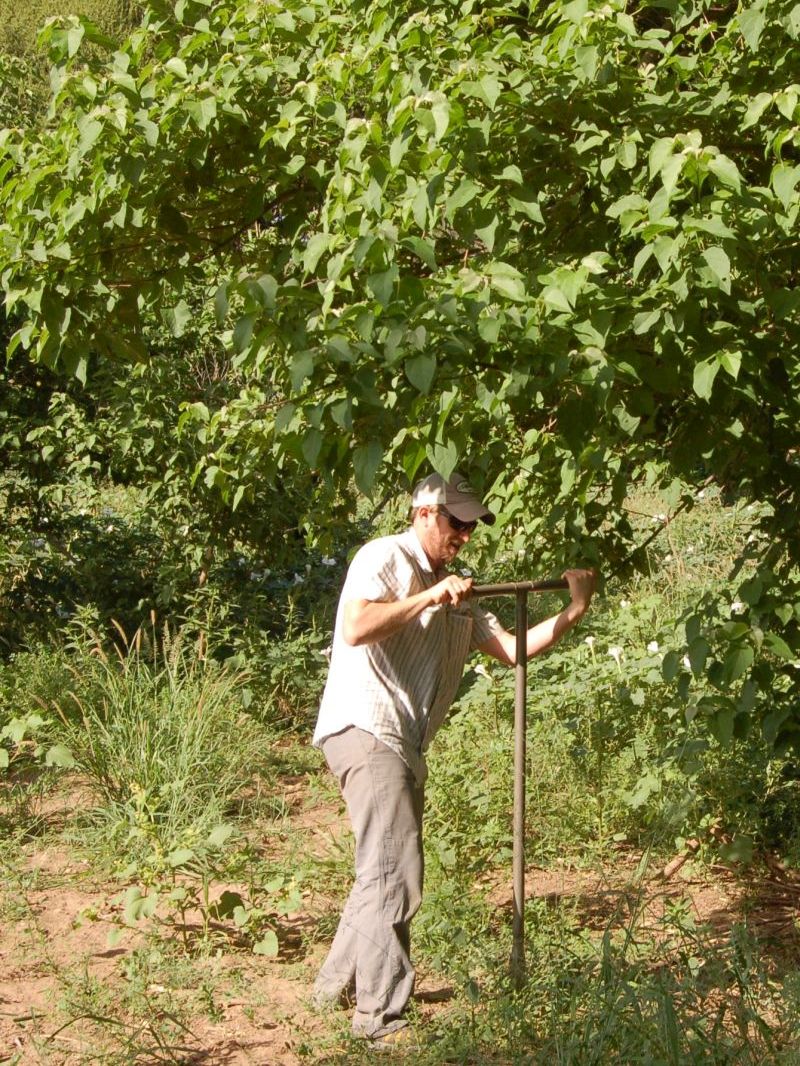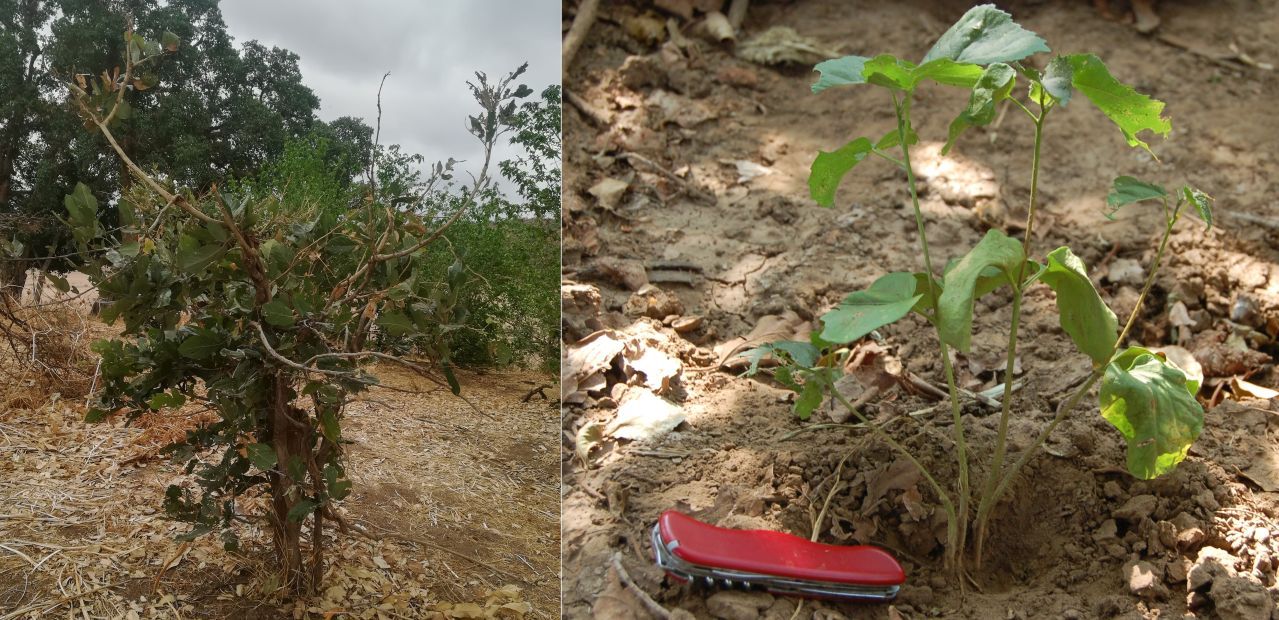eNews
#01 2024
What is the cause of the decline of African riparian forests?
By Tony Swemmer, Manager: Ndlovu Node, NRF-SAEON
SAEON staff and collaborators recently published the results of a decade-long study that investigated the causes of the mortality of large riparian trees in Mapungubwe National Park.
In the drier parts of the world, riparian forests typically occur as narrow strips of tall green trees within a matrix of short trees, shrubs and grasses.
While deforestation is now a well-known environmental issue, much of the monitoring and research of it has occurred in tropical forests, where it is most prevalent. The general absence of forests from the drier parts of the world, where grasslands and savannas are the natural ecosystem types, means that deforestation is not usually a concern in these areas.
However, the larger rivers of these areas usually support a different type of forest, called riparian forest, in narrow bands along their banks. These are usually critically important ecosystems, sustaining high levels of productivity and biodiversity in relatively small areas, and providing vital food for wildlife and livestock during the long dry seasons that occur in drier areas.
In Mapungubwe National Park, many stands of riparian forest have been transformed to open woodland or shrubland over the past three decades. This is evident in the foreground of this photo, where tall grasses and shrubs have replaced large riparian trees, many of which were over 25 metres tall. Some of the surviving tall riparian trees are still visible in the background.
Professor Tim O’Connor (previously SAEON’s Observation Science Specialist) initiated the original research on the decline of riparian trees in the area in the early 1990s, following the establishment of boreholes for a nearby mine. Tim’s data and insights formed the basis for the recent study.
Riparian forests around the world have been in decline for much of the past century, and this has received much attention from hydrologists and ecologists, particularly in the USA, Europe and Australia. Such research generally indicates that a lack of water, due to damming of rivers or abstraction, is the cause of the premature death of the tall trees that make up these forests. In Africa, similar declines have occurred in riparian forests, but elephant have often been identified as the cause, and the relative importance of hydrological changes versus damage by elephant has rarely been studied.
In 2011, the SAEON Ndlovu Node inherited a unique long-term data set on the size and vitality of hundreds of gigantic riparian trees growing on the banks of the Limpopo River in Mapungubwe National Park. These were used for a new study that aimed to disentangle the importance of hydrological changes (including drought, reduced river flows and abstraction of alluvial water from boreholes alongside the river) and elephant as causes of the widespread and ongoing mortality of these trees.
The two riparian forest species which have shown the largest declines in the recently published study – the Ana Tree (Faidherbia albida), front, and Fever Tree (Vachellia xanthophloea) behind, with yellow bark. Note the extensive bark damage to the Ana Tree. Both species are frequently debarked by elephant, but this was not found to be a major cause of mortality. The majority of the 99 tagged trees that died during the 11-year study did not experience any significant elephant damage.
Another of the focal species of this study, the Sycamore Fig (Sycamorus ficus), which typically grows right on the banks of the Limpopo River and is susceptible to being washed away during extreme floods. This species has also experienced major losses, although low rainfall and reduced river flows were the main cause of these over the past decade, rather than extreme flooding which was a major cause in earlier decades. This species is also regularly fed on by elephant – as evidenced by the extensive scarring on the trunk of this specimen – but this was not found to be a significant cause of mortality.
Dr Jesse Nippert from Kansas State University (USA) was a co-author on the study and conducted the plant water use analysis, using isotopic analysis of water collected from soils, plants, the river and boreholes to determine whether the riparian trees were using rain, river or deep groundwater as the primary source of water.
The results, recently published here, found that low rainfall, and possibly associated reductions in river flows, were the primary causes of the ongoing death of the trees. Although elephant regularly feed on the riparian trees, this damage was mostly not severe enough to cause mortality.
The study highlights the value of long-term data for understanding the causes of a major ecosystem transformation and provides useful insights for managers who may wish to restore riparian forests.
The results of the study have implications for the future of riparian forests in Mapungubwe National Park, and the broader region. The once dominant riparian species cannot survive under current environmental conditions, and which are likely to become even less favourable as global climate change progresses. While some adult trees do seem capable of surviving current conditions, there appears to be little recruitment of them, with few juvenile trees and severe damage to these by elephant (left). In contrast, smaller species such as the Feverberry (Croton megalobotrys) are becoming dominant, with numerous seedlings (right) and juveniles. If managers wish to restore riparian forests in these areas, research will be needed to identify suitable species, such as the Feverberry, and the factors that promote their growth into large riparian trees.


